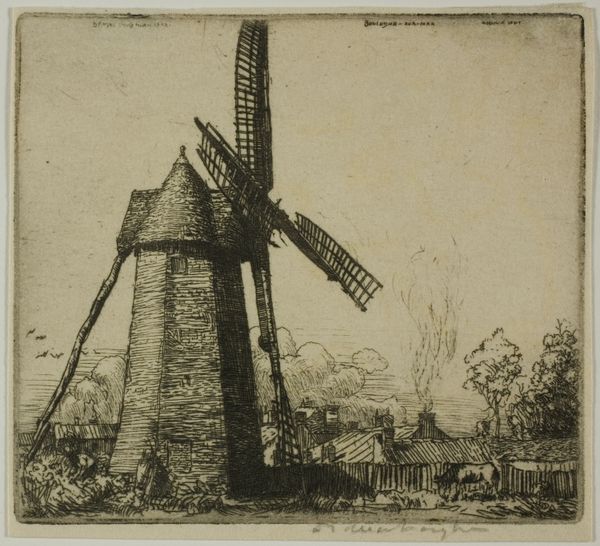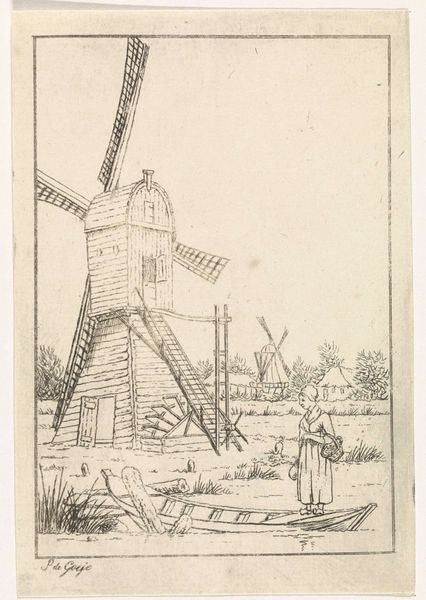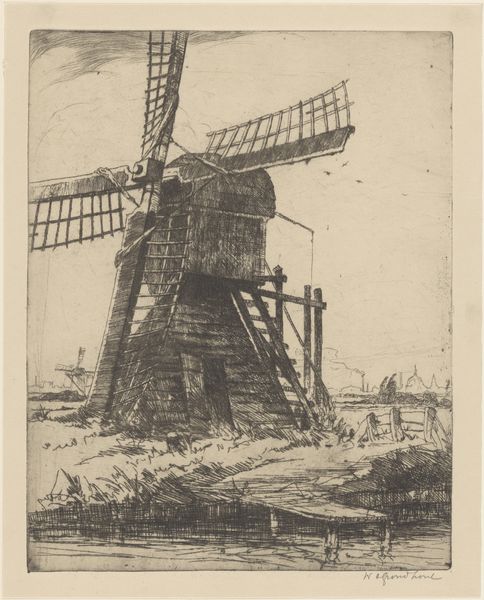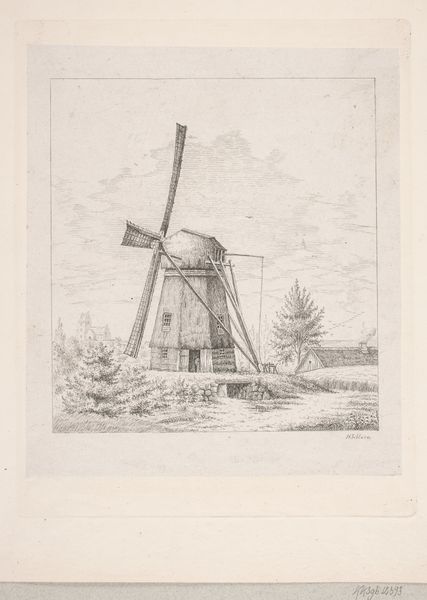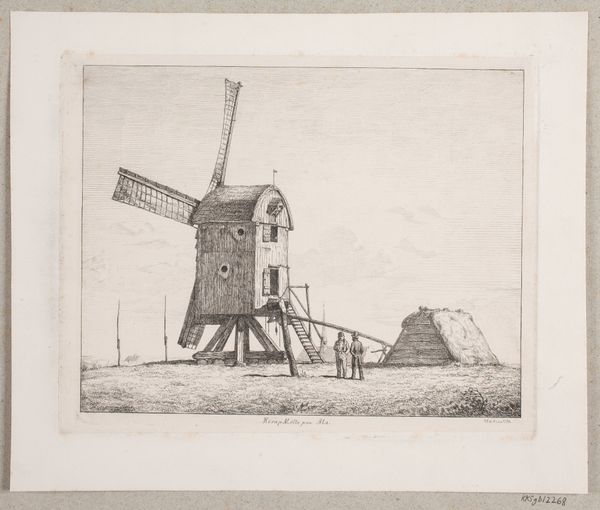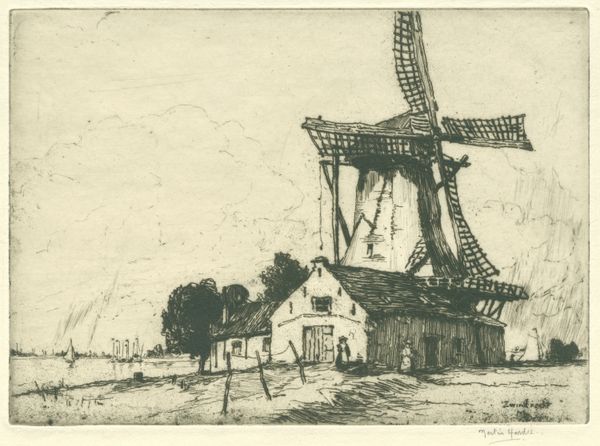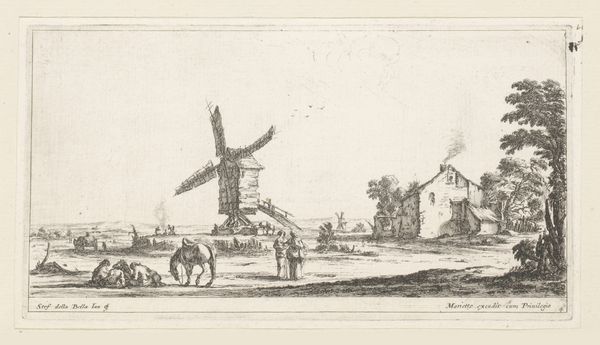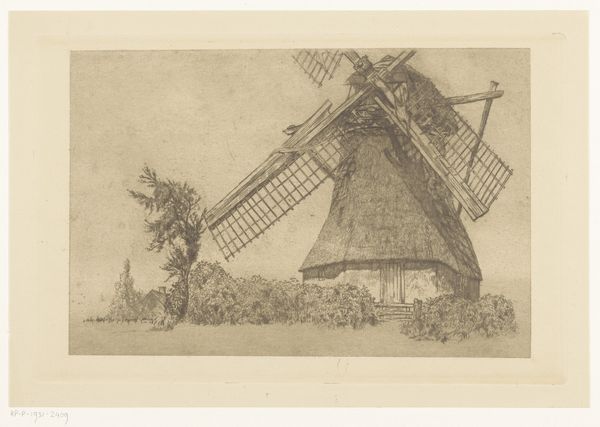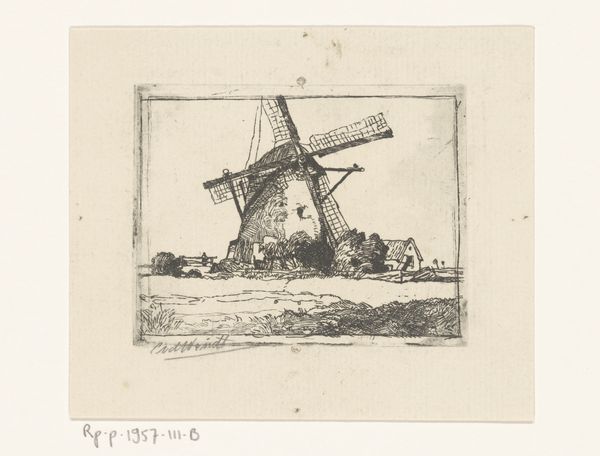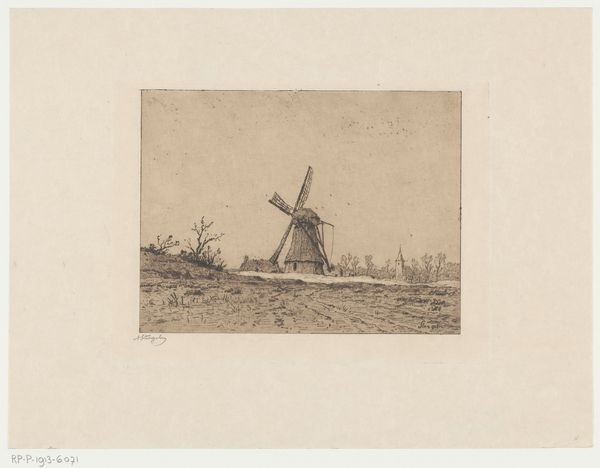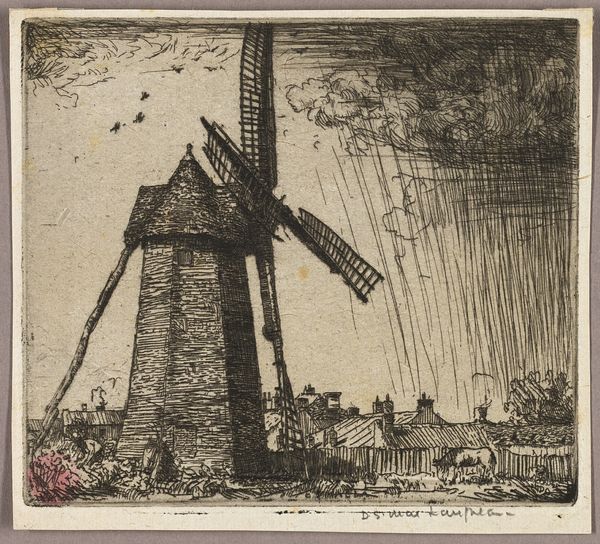
drawing, print, etching, paper
#
drawing
# print
#
etching
#
landscape
#
paper
#
line
#
realism
Dimensions: 89 × 100 mm (image/plate); 101 × 106 mm (sheet)
Copyright: Public Domain
This small print, "The Windmill," was created by Donald Shaw MacLaughlan using etching, a printmaking technique known for its fine lines and intricate detail. The etching process begins with a metal plate covered in a waxy, acid-resistant ground. The artist then draws through this ground with a needle, exposing the metal. When the plate is immersed in acid, the exposed lines are bitten, creating grooves. Ink is then applied to the plate, filling these grooves, and the surface is wiped clean. Finally, the plate is pressed onto paper, transferring the image. MacLaughlan masterfully uses this process to capture the texture and form of the windmill. Look closely and you can see how the density of lines creates depth and shadow, particularly in the stonework and the wooden structure. The contrast between the solid windmill and the open sky is striking, achieved through careful manipulation of line and tone. Etching, as a medium, allowed artists to produce multiples, making art more accessible to a wider audience. It’s a fascinating intersection of craft, technique, and social context.
Comments
No comments
Be the first to comment and join the conversation on the ultimate creative platform.
